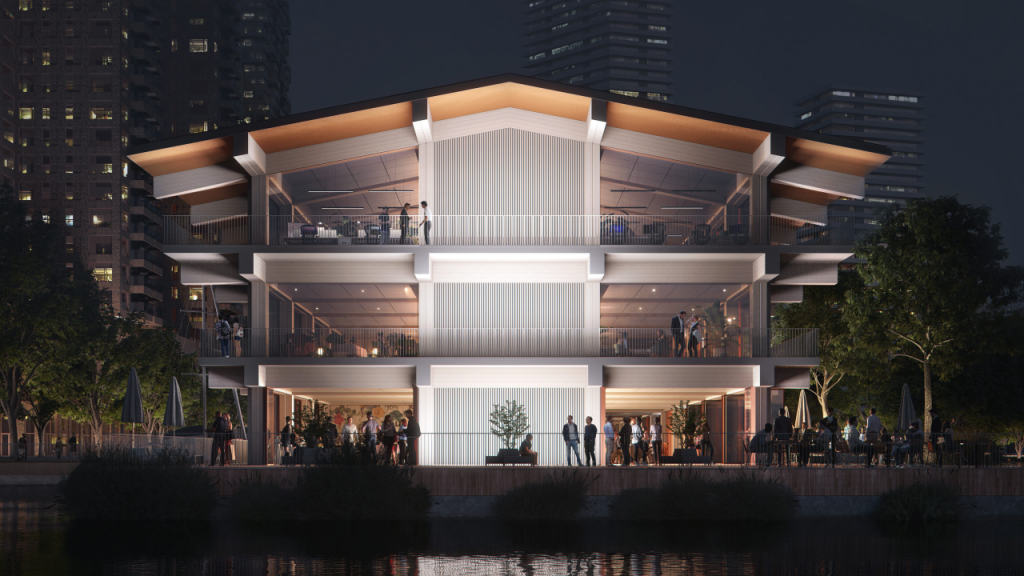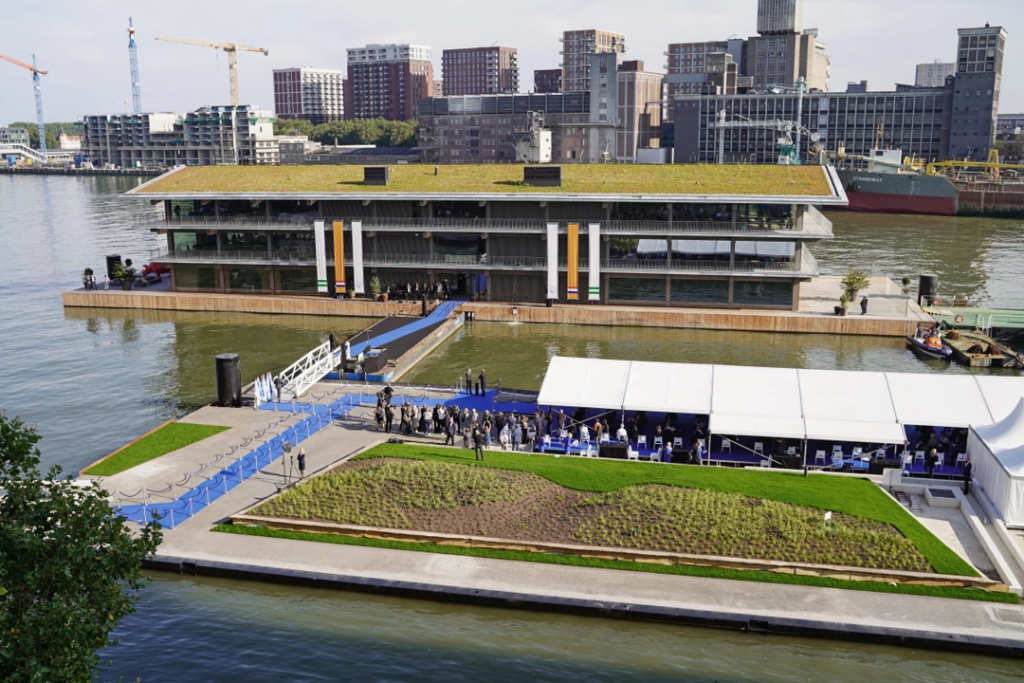Powerhouse Company has released the latest images of the world’s largest floating office, named Floating Office Rotterdam (FOR), showing that the structure has taken a giant step toward its completion. The floating office is designed to rise with the tides of climate change, will get all of its electricity needs from a solar array, and can be easily recycled once it reaches the end of its useful life.

FOR was recently launched by King Willem-Alexander of the Netherlands, former UN Secretary-General Ban Ki-moon, and IMF managing director Kristalina Georgieva. It houses the ABN Amro bank, the RED Company, the Powerhouse Company itself, and the Global Centre on Adaptation, headed by Ki-moon. In addition, there is also a restaurant aboard with a large outdoor terrace and a swimming pool, adding new life to the harbour area.

On Monday, 31 August, the enormous floating structure came to its permanent berth in the Rijnhaven harbour, routed over 80 kilometres from Zaandam.
The floating office has a surface area of 3,606 sq m (roughly 38,800 sq ft) with a large terrace area and three floors. The upper floors feature overhanging balconies to shade the interior. It also has a green roof on top. Structurally, it’s made from timber to minimize its carbon footprint. The structure is supported by 15 custom-made concrete pontoons connected to form a stable floating foundation.

FOR will make use of natural energy thanks to 800 square meters of solar panels. It will also use the harbour water from the Rijnhaven for cooling. With its own solar energy source and water-based heat-exchange system, it’s completely self-sufficient. It will last for a decade, after which it may be placed in or shifted to another tenant, according to needs.
“We designed our floating office to reflect the values of its inhabitants: the Global Center on Adaptation,” says Powerhouse Company.

“This Rotterdam-based NGO chaired by Ban Ki-moon aims at promoting planning, investment, and technology to mitigate climate change. The carbon-neutral building is designed to be climate resilient and float if sea levels rise due to climate change. Our climate-resilient office is both an illustration of the centre’s mission and sets an example for how to build sustainable floating structures.”
Source: Powerhouse Company


